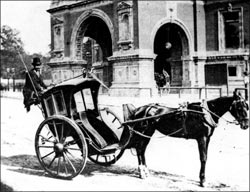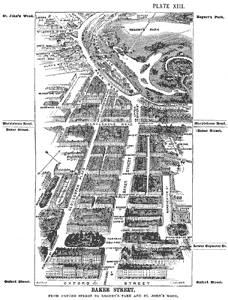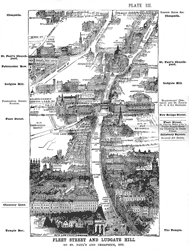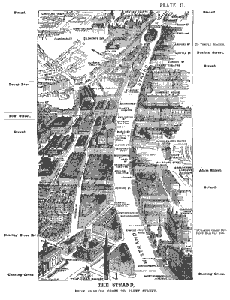Issue 1 : A Scandal in Bohemia
To Sherlock Holmes, she is always the woman.
Perfectly logical though he may seem, Holmes is not above making
the occasional misogynistic remark. In this story, he learns the
cost of underestimating the intelligence and resourcefulness of
women. Opera singer Irene Adler is one of the very few women ever
to win Holmes's interest or respect. No matter how much Conan Doyle's
female readers might have desired it, however, Holmes never falls
in love, not even with Irene. Irene's character has inspired a modern
series of novels by Carole Nelson Douglas, as well as various short
stories.
My marriage had drifted us away from each other.
At the end of Conan Doyle's second novel featuring Holmes, The
Sign of Four, Watson married Mary Morstan, whose father's mysterious
past in India is central to the plot. Although Watson never mentions
having married more than once, Sherlockians have found persuasive
evidence that he did. "A Scandal in Bohemia" begins on March 20,
1888, and The Sign of Four either takes place in July,
1888, (gleaned from a postmark mentioned in the story) or in September
of that year (based on a remark by Watson). Did Watson have a wife
before Mary Morstan? Or can we chalk the puzzle up to Conan Doyle's
habitual carelessness with dates?
...while Holmes, who loathed every form of society with his whole
Bohemian soul...
Holmes is not a "Bohemian" in the same sense as the King. Because
Gypsies were erroneously thought to have originated in Bohemia,
the country's name came to mean "unconventional." The King, a Bohemian
by birth, is extremely conventional, and judges people by their
rank rather than their qualities, thus earning Holmes's scorn.
...and alternating from week to week between cocaine and ambition,
the drowsiness of the drug, and the fierce energy of his own keen
nature.
Holmes rejects middle-class stability in favor of his vocation.
When he has no cases to investigate, he takes cocaine--at the time,
a legal drug--as an artificial substitute for the thrill of the chase.
In this conversation from The Sign of Four, Holmes explains
his behavior:
"My mind," he said, "rebels at stagnation.
Give me problems, give me work, give me the most abstruse cryptogram,
or the most intricate analysis, and I am in my own proper atmosphere.
I can dispense then with artificial stimulants. But I abhor the
dull routine of existence. I crave for mental exaltation. That
is why I have chosen my own particular profession, or rather created
it, for I am the only one in the world."
"The only unofficial detective?"
I said, raising my eyebrows.
"The only unofficial consulting
detective," he answered.
From time to time I heard some vague account
of his doings: of his summons to Odessa in the case of the Trepoff
murder, of his clearing up of the singular tragedy of the Atkinson
brothers at Trincomalee, and finally of the mission which he had
accomplished so delicately and successfully for the reigning family
of Holland.
Conan Doyle often has Watson list Holmes's various cases. Unfortunately,
Conan Doyle (or Watson) neglected to write most of them into stories.
Several (not these) have been used by modern writers as the inspiration
for new Holmes and Watson tales. One of the most suggestive—but,
alas, unwritten by Conan Doyle—titles, mentioned by Holmes
in "The Sussex Vampire," is the strange case of "the giant rat of
Sumatra, a story for which the world is not yet prepared."
One night—it was on the twentieth of March, 1888—I was returning
from a journey to a patient (for I had now returned to civil practice),
when my way led me through Baker Street.
In the year 1881, Holmes and Watson meet in A Study in Scarlet because they both need roommates. Holmes has already rented an apartment at 221B Baker Street, and Watson agrees to share it. Holmes's financial situation must have improved by the end of The Sign of Four, since he is able to go on renting the lodgings alone when Watson marries Miss Mary Morstan (an heiress) and goes off to live with her.
Although Watson is a doctor, he does not practice his profession in A Study in Scarlet or The Sign of Four because he is still recuperating from a war wound received in Afghanistan.
...and indicated a spirit case and a gasogene in the corner.
Also called a "tantalus," a spirit case holds crystal decanters of spirits (whiskey, brandy, etc.) so that they are visible and yet inaccessible to the servants when the bar holding the stoppers is locked down. This puts the servants in the same position as Tantalus from Greek mythology, a son of Zeus who was tortured in the underworld with burning hunger and thirst that he could not assuage, despite the water and fruit that seemed almost within his reach.
A "gasogene," or "gazogene," is the Victorian equivalent of a seltzer bottle: it uses a canister of carbon dioxide under high pressure and forces the gas into plain water to make sparkling water for use in mixed drinks.
"I see it, I deduce it. How do I know that you have been getting yourself very wet lately, and that you have a most clumsy and careless servant girl?"
Here, Holmes spells out his method for Watson. From observation of small details, he builds a theory that fits the facts. Of course, Holmes also likes to begin with a startling pronouncement that makes him look prescient in the eyes of those not "in the know." As Watson says several times, it all seems simple when you know how it's done. Holmes often prefers to defer explanation, and thus to maintain an aura of mystery as long as possible.
"You would certainly have been burned, had you lived a few centuries ago."
As a witch, that is. Witch burnings in England took place mostly in the late 16th and early 17th centuries.
"Hence, you see, my double deduction that you had been out in vile weather, and that you had a particularly malignant boot-slitting specimen of the London slavey."
A "slavey" was a maidservant performing the most menial duties in a Victorian household.
"You see, but you do not observe. The distinction is clear."
Holmes's method depends upon enlightened observation: thinking about and remembering what he sees as he sees it.
"I have no data yet. It is a capital mistake to theorize before one has data. Insensibly one begins to twist facts to suit theories, instead of theories to suit facts."
This is one of Holmes's most famous pronouncements, and might explain why he is often unwilling to share a theory before he has the facts to prove it.
"Eglow, Eglonitz—here we are, Egria. It is in a German-speaking country in Bohemia, not far from Carlsbad."
Homles's index is in error. Eger, not Egria, was located in Bohemia. Bohemia today is part of the Czech Republic. Carlsbad (or "Karlsbad") is a city in the Czech Republic about 100 miles from Prague that is famous as a spa. In Conan Doyle's time, Bohemia was part of the Austro-Hungarian Empire.
"Remarkable as being the scene of the death of Wallenstein."
Albrecht Wenzel von Wallenstein (1583-1634) was a Bohemian general during the Thirty Years' War who was assassinated at Eger during a negotiation.
"I am lost without my Boswell."
James Boswell (1740-1795) famously chronicled the life of Samuel Johnson (1709-1784) and is credited with inventing the modern art of biography.
"A nice little brougham and a pair of beauties."
A brougham is a small, closed, four-wheeled carriage pulled by one or two horses, with an open seat for the driver and room for two or four passengers inside.
"A hundred and fifty guineas apiece."
A guinea was an old English coin, worth 21 shillings, or one shilling above a pound. Its name is still used today to add an aura of opulence to a large transaction, although the coin no longer circulated by Conan Doyle's time. In 1888, a rising professional man might earn £700 a year, while a senior clerk might take home £150. Holmes's point is that the horses cost much more than any ordinary person could hope to afford, thus rendering his illustrious client fairly conspicuous and his disguise a bit absurd.
Heavy bands of Astrakhan were slashed across the sleeves and fronts of his double-breasted coat...
Astrakhan wool consists of lambskin with the curled wool still attached. The King's style of dress stands out as exotic, and even barbaric, in Victorian London.
...a black vizard mask...
That is, a mask that covers the upper part of the face from the eyebrows to the nose.
"Your Majesty had not spoken before I was aware that I was addressing Wilhelm Gottsreich Sigismond von Ormstein, Grand Duke of Cassel-Felstein, and hereditary King of Bohemia."
These names are fictional, but speculation about what actual person
this character might have represented fed the Victorians' love of
royal gossip. So many royals across Europe were implicated in scandals
that it is impossible to know if Conan Doyle had someone specific
in mind.
"Some five years ago, during a lengthy visit to Warsaw,
I made the acquaintance of the well-known adventuress, Irene Adler. The name
is no doubt familiar to you."
Irene Adler resembles British actress Lily Langtry (1853-1925), who had an affair
with the Prince of Wales. Other sources have been suggested for her character
as well. Calling her an "adventuress" (meaning a "gold-digger") is more than
a little insulting.
St. John's Wood
can be seen in the upper-left-hand corner of this map |
Founded in 1865 as a grand luxury hotel, the Langham has been restored and is in operation again today. It a short walk from there to Baker Street, which is northwest of the hotel: up Regent Street, right on Oxford, and right again on Baker Street.
"You have carte blanche."
The French equivalent of a "blank check."
"There are three hundred pounds in gold and seven hundred in notes," he said.
As with everything else the King does, this is overkill. Three hundred pounds
would equal more than $100,000 today.
"…Briony Lodge, Serpentine Avenue, St. John's Wood."
St. John's Wood is a section of London not far from Baker Street, but the street
address is fictional. The neighborhood was notorious for housing a number of
"kept women."
"One other question," said he. "Was the photograph a
cabinet?"
A cabinet photograph was meant for framed display, and was roughly equivalent
to a 4x6 photograph today. Holmes seems to be wondering how easily the photograph
in question could have been concealed.
"I soon found Briony Lodge. It is a bijou
villa, with a garden at the back, but built out in front right up to the
road, two stories. Chubb lock to the door."
Bijou means "jewel" in French, and implies that the villa was small but
well-appointed. The Chubb lock, patented in 1818, was advertised as unpickable.
The company exists today.
"I then lounged down the street and found, as I expected, that there
was a mews in a lane which runs down by one wall of the garden."
A mews is an urban alleyway with stables facing on it, away from the main
street.
The Temple, with its
New Law Courts, can be seen at the bottom of the map |
"Ostlers" are stablehands. "Half and half" is a drink composed half of porter or stout and half of lighter beer or ale. "Shag tobacco," Holmes's favorite when he has a problem to solve, is a crude, strong tobacco with a high nicotine content.
 |
A typical hansom
cab outside the Albert Hall |
Occupied by the Knights Templar until their disbanding in the early 14th century, the Temple Church gave its name to the surrounding area, which has served as the legal center of London for seven hundred years. Since Godfrey Norton was a lawyer, he would have had rooms at one of the Inns of Court at the Temple.
"…a hansom cab…"
A hansom was a two-wheeled cab for hire, pulled by one horse.
"'Drive like the devil,' he shouted, 'first to Gross & Hankey's in Regent Street, and then to the Church of St. Monica in the Edgeware Road.'"
Both Gross & Hankey (presumably a jeweler's shop) and St. Monica's Church are fictional places, although the streets are real.
"…a neat little landau…"
A landau is a private carriage, larger and more luxurious than the public hansom cab.
"Come, man, come, only three minutes, or it won't be legal."
No one is quite sure what all the rush was about here. Perhaps Conan Doyle harbored some misconception about marriage laws.
"When Mrs. Turner has brought in the tray I will make it clear to you."
Holmes and Watson's landlady is named Mrs. Hudson in The Sign of Four and elsewhere in the stories. Mrs. Turner never appears again. Perhaps she was just visiting.
...an amiable and simple-minded Nonconformist clergyman.
Holmes chooses as his disguise a minister not associated with the Anglican Church. It was against the law to impersonate a Church of England minister.
Charing Cross Station
can be found in the lower right of this map, on the Strand near Trafalgar Square |
A prominent Victorian stage actor who went on to make at least two silent films.
"A married woman grabs at her baby; an unmarried one reaches for her jewel-box."
This conceit has become a commonplace of the detective story: if you manufacture an emergency, you will find out where the valuables are hidden.
"I've heard that voice before," said Holmes, staring down the dimly lit street. "Now, I wonder who the deuce that could have been."
Holmes rarely fails to observe what is right before his eyes. Here, his misogyny blinds him to the fact that the "slim youth" rushing by might not be what he seems.
"She left this morning with her husband by the 5:15 train from Charing Cross for the Continent."
Irene has left for "the Continent," meaning Europe.
"Did I not tell you how quick and resolute she was? Would she not have made an admirable queen? Is it not a pity that she was not on my level?"
"From what I have seen of the lady, she seems, indeed, to be on a very different level to your Majesty," said Holmes coldly.
Holmes's admiration for people is based on ability, not social station. His insult to the King apparently goes unnoticed.


